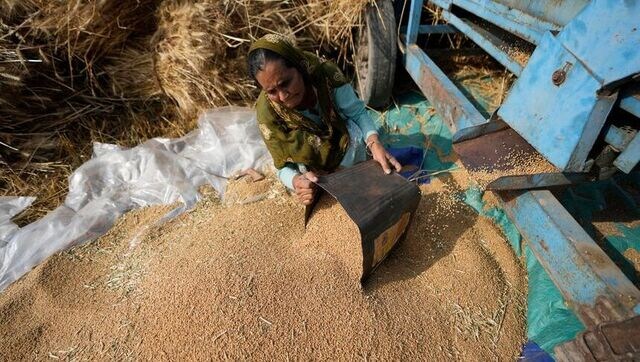Understanding buffer stock and the purpose it serves
A buffer stock is a scheme, which allows the government to store excess amount of critical commodities to guard against any unplanned event, such as production or harvest failure or shortage

Representational image. AP
The Central government recently announced that there would be no restriction on the export of rice. The government stated that there is enough buffer stock to meet domestic demand despite an expected shortage in grain harvest in the upcoming harvest season. The government is required by law to keep 41.1 million tonnes of rice and wheat on 1 July and 30.7 million tonnes of both grains on 1 October.
What is a buffer stock?
A buffer stock is an excess stock of goods or commodities than what is required for a specific purpose. Governments use the buffer stock scheme where they buy commodities and goods during times of surplus and then sell those goods at times of economic shortage. This is done for two reasons – to keep prices of goods and commodities stable and to prevent economic shocks as a result of shortages.
The most common commodity, which is stocked in excess is food grains so that there is no shortage of staple food and thus preventing potential famine-like situations. However, buffer stocks of other critical commodities like fuel exist as well. The Indian government stores wheat, rice along with other staple food items. These excess food items are stored “to take care of shortfall in production or natural calamities,” according to the Food Corporation of India.
Apart from creating a strategic and operational reserve that can be used in times of emergency, the action of buying and selling commodities to maintain the stock can also function as a financial stabiliser. Buffer stocks are usually filled at times of a commodity glut or surplus, which results in prices being driven down. The additional demand created by the filling of the buffer stock results in prices being driven up again and stabilise. During times of shortages, prices go up, but if reserves from the buffer stock are released then due to the increased availability of goods the prices begin to drop again.
Read all the Latest News, Trending News, Cricket News, Bollywood News,
India News and Entertainment News here. Follow us on Facebook, Twitter and Instagram.
also read

Importing pulses to maintain buffer stock, but govt's move at times hurt domestic producers
While the government has contracted to import from Mozambique, at no time last year did Mozambique offer India the most favourable of prices

Pulses hit Rs 200/kg: Govt curbs cartels and futures trade, raises buffer
The Food Ministry decided to enhance the buffer stock of pulses from 1.5 lakh tonnes to 8 lakh tonnes

Govt creating 50,000 tonne of onion buffer to curb price rise; wholesale price jumps by over 29% to Rs 11/kg
In the national capital, retail onion prices are ruling at Rs 20-25 per kg depending on the varieties, as per the trade data.